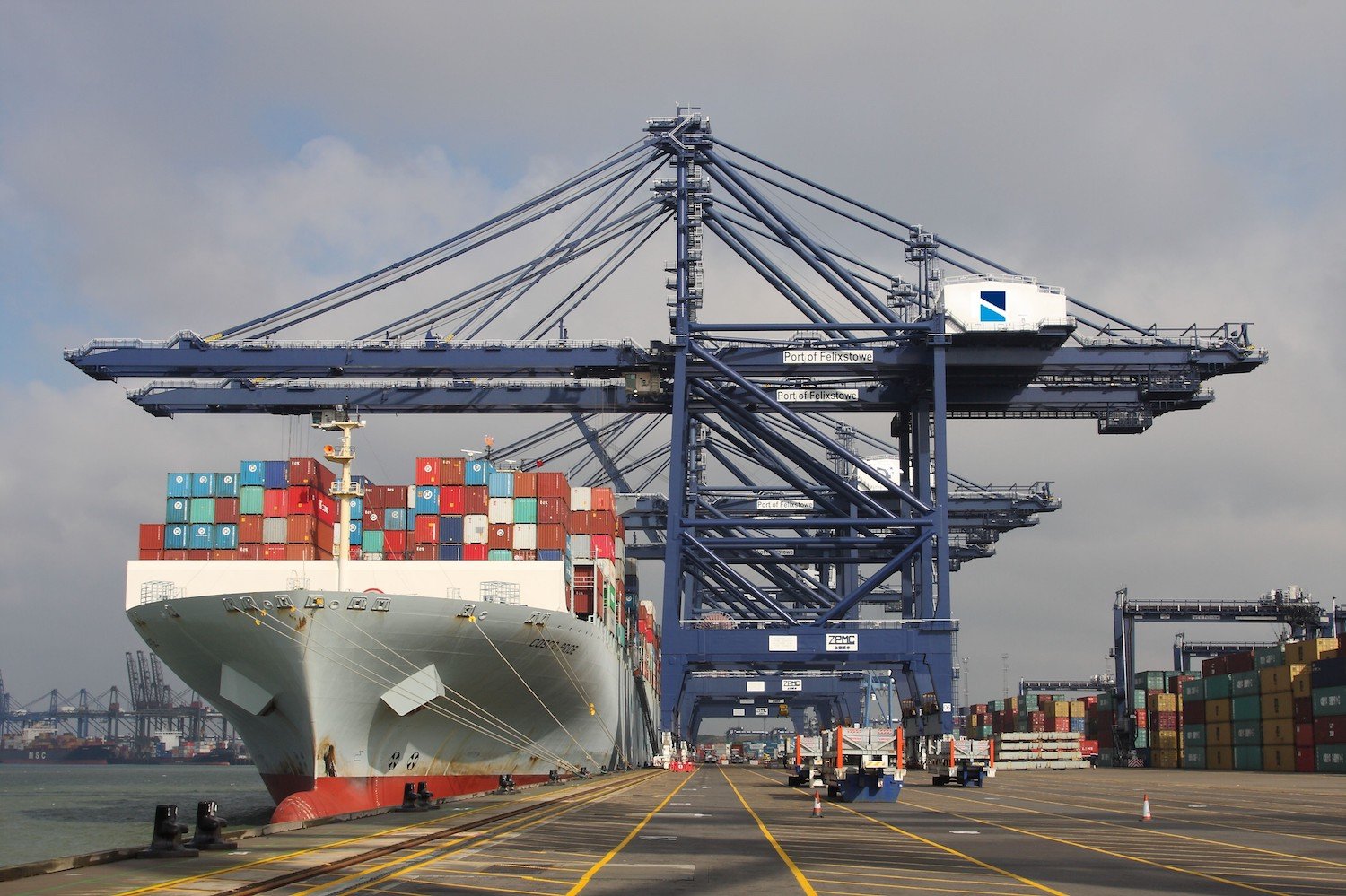HIGHLIGHTS
- Port of Felixstowe has deployed 5G technology and the Internet of Things (IoT) to improve efficiency.
- 5G technology has the potential to revolutionize a wide range of UK industries.
- Tests have already been undertaken to ensure the 5G network’s capability in many situations.
FULL ARTICLE
Improvement efforts to raise efficiency
Along with consortium members, the telecommunications provider Three UK, the software corporation Blue Mesh Solutions, and the University of Cambridge, the port of Felixstowe were successful in an application for funding under the 5G testbeds and trials program (5GTT) run by the department for digital, culture, media and sport (DCMS).

The project aims to prove 5G’s capabilities in a busy port environment in order to enhance productivity, efficiency, and safety across its core operations. Specifically, the 5G technology delivers predictive maintenance of quay cranes using Internet of Things (IoT) sensors combined with communications for remote control cranes yard.
“As part of the 5G project, six quay cranes are being fitted with IoT sensors to understand the stresses and strains placed on them by day-to-day operation. The usage of 5G to transmit the data enables these systems to operate in real-time, and safety-critical applications can be enabled immediately”, according to Karen Poulter, head of information services at Port of Felixstowe.
In addition, Cambridge University is developing an algorithm to predict equipment failure and suggest the optimum time to maintain the equipment, by using the data generated by the IoT sensors and linking it to the actual activity on the crane together with previous maintenance records.
Ajith Parlikad, professor of asset management at the University of Cambridge shared: “We will harness the speed, low-latency, and high-capacity of 5G to send the high volumes of data generated by the IoT sensors for an Artificial Intelligence-based predictive maintenance system, which will be able to detect anomalies in the cranes and alert the operators so that preventive maintenance can be targeted at essential areas before the failure actually happens.”
The algorithm is projected to maximize the number of times cranes are in use and reduce the cost associated with emergency repairs and day-to-day maintenance. In addition, the 5G network can handle the enormous volume of data collected, which will then be used to create algorithms that wouldn’t be sustainable at the 4G level.
Future’s choice
UK’s digital infrastructure minister Julia Lopez commented, “It’s incredible to see our £200 million investment in 5G tech is empowering Britain’s biggest and busiest container port to explore new ways of driving efficiency, improving safety and supporting the UK’s status as a global trading nation.”
About the project, Matt Warman, who used to be UK’s Parliamentary Under-Secretary of State for Tech and Digital Economy, said: “We want to unlock 5G’s potential to revolutionize a wide range of UK industries and 5G Ports is just one project the government is backing to achieve this.

The project at Port of Felixstowe is predicted to complete in September 2022, while tests have already been undertaken at Three UK’s lab to ensure the 5G network’s capability in many situations.
Gia Don
Taiwan Semiconductor Technology: The US-China Confrontation Front













